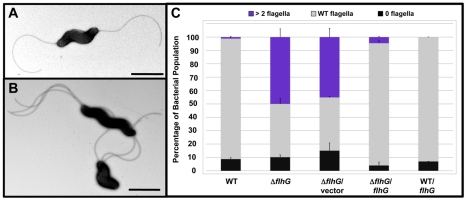Figure 1. FlhG controls polar flagellar numbers in C. jejuni.
(A and B) Electron micrographs of negatively stained (A) wild-type C. jejuni and (B) C. jejuni ΔflhG. Bars = 1 µm (A) and 2 µm (B). (C) Quantification of flagellar numbers of wild-type C. jejuni and ΔflhG mutant populations. Individual bacteria were analyzed for the number of flagella produced at each pole. Wild-type C. jejuni and C. jejuni ΔflhG were complemented with vector alone, or vector expressing wild-type flhG. The data are reported as the percentage of the bacterial population with the following flagellar numerical patterns: >2 flagella, producing two or more flagella at least at one pole (purple); wild-type flagella, producing a single flagellum at one or both poles (grey); and 0 flagella, aflagellated bacteria (black). Data represent the average of two experiments. Bars represent standard errors.

